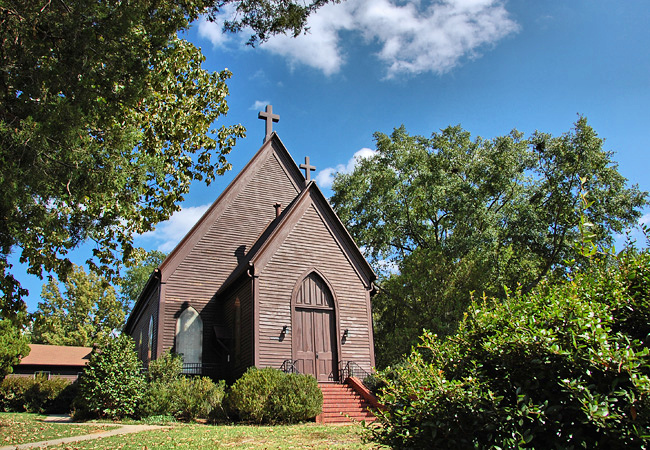|
Scenic USA - Georgia St. Stephens Episcopal Church |

| Photos by Ben Prepelka Ben Prepelka Photography |
Serving as Georgia's Capital from 1804 to 1868, Milledgeville is often considered the only surviving example of a complete Federalist Period city. Named after Georgia's Governor John Milledge (1802-1806), the city was laid out with broad streets that followed four points of a compass. Including plenty of green space, large public squares were incorporated in the city’s plan. Providing a central location in the heart of Georgia and a steady water supply, the city's success is most noticeable in its architecture and institutions of higher learning.
St. Stephens Episcopal Church, built in 1843, is one of the Milledgeville survivors from General Sherman's occupation. Severely damaged when Union troops blew up a nearby armory, St. Stephens continues to serve the Milledgeville community to this day. Nearing its 170 year mark, the church's history began with an original congregation of six. Organized in 1841 as a parish of the Atlanta Diocese, building plans called for a Carpenter Gothic style, appropriately following the Gothic Revival style of the Old Capitol Building. As the Civil War brought the Union forces into Georgia's coastal region, many families fled to towns in the center of the state such as Milledgeville. During the war years, the churches membership blossomed. Unfortunately, the Capital City bore the brunt of General Sherman's devastating march. Even though Union forces stormed through the city in a few days, many important buildings and bridges where burned. Here in the St. Stephens Church pews were burned as firewood, Sherman's horses were stabled in the sanctuary and soldiers ransacked the church, ruining the organ. Despite the damage, the steadfast members rebuilt the church and the icon remains a historic part of the Old Capital City's Statehouse Square.
Area Map

|
Additional Area Attractions |
Scenic USA Prints from
|
Copyright © 2020 Benjamin Prepelka
All Rights Reserved

